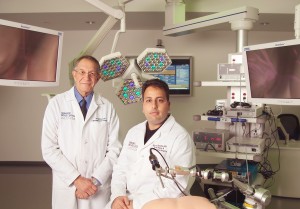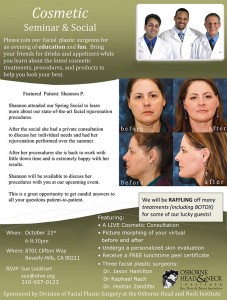- Folded Ear in Newborns: Treatment Options - April 11, 2018
- Newborn Ear Deformity: What Can Be Done? - April 11, 2018
- Ear Molding: An Overview - November 2, 2017
- Otoplasty for Protruding Ears - September 26, 2017
- Basal Cell Carcinoma: Facial Reconstruction Timing - September 26, 2017
- Clinical Considerations of Mohs Reconstruction of Cheek Defect - September 26, 2017
- Basal Cell Carcinoma: Nasal Bridge Reconstruction - September 26, 2017
- Skin Cancers Involving the Eyebrow: Clinical Considerations - October 3, 2016
- Treatment of Multiple Skin Cancer Lesions - June 1, 2016
- Skin Cancer: Nasal Reconstruction and Scar Management - June 1, 2016
The US men’s World Cup team captain and striker, Clint Dempsey, sustained a major facial injury in the US’s opening game against Ghana. As the Ghanaian player’s leg flew high, US fans saw the contact with Dempsey’s nose, and saw him fall to the ground, bloody and in obvious pain. He left the field for a short time and was tended to by team physicians, returning minutes later with no signs of bleeding.
Many wondered if he had just suffered a bloody nose but those of us familiar with facial trauma knew that a blow at that angle and with that amount of force had broken the striker’s nose. After the game he stated that he had difficulty breathing through his nose and that he would not wear a mask in the follow up game against Portugal as other professional athletes have.
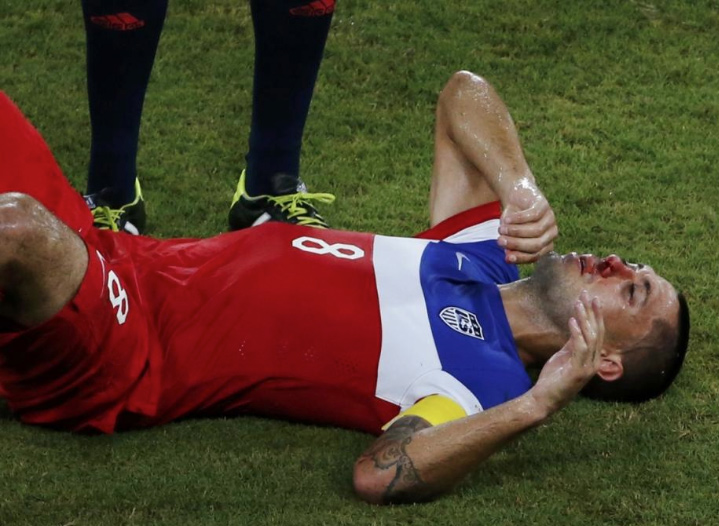
How does the nose break?
Nasal bone fractures require a significant amount of force. The bone is strong; however, it’s central location in the face and its prominence means that it is typically subject to facial trauma first. Some nasal injuries are simply septal fractures (the internal midline division within the nose breaks); however, a significant amount of force can also break the nasal bones.
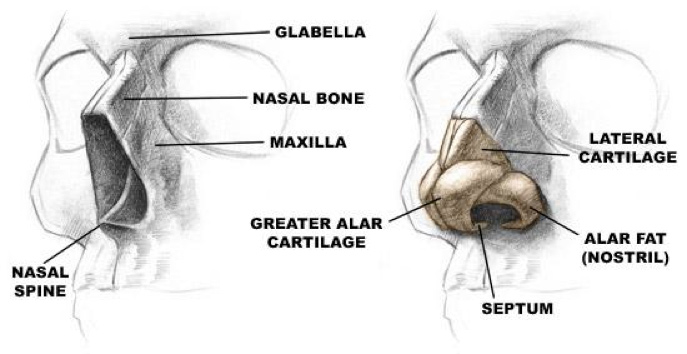
What are the symptoms of a nasal fracture?
A nasal fracture is very painful. There is often an associated nosebleed (epistaxis) with these fractures. However, epistaxis can occur in the absence of a nasal bone fracture, especially with septal fractures. Nasal obstruction and swelling usually occur in the immediate first 1-2 days following the initial trauma. Deviation of the nose’s appearance becomes more apparent as swelling subsides in the following days. Black eyes also typically occur with a true nasal fracture.
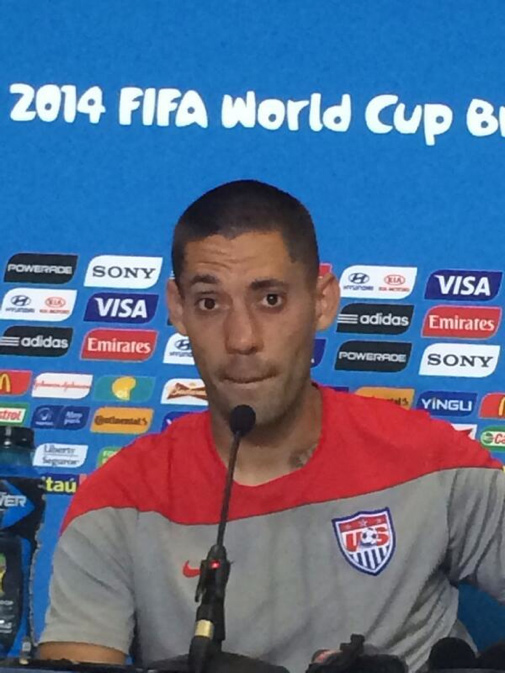
What are the treatments available for a broken nose?
Time is critical when considering treatment for nasal fractures. Within the first hours after a nasal fracture (before swelling has started) a broken nose can be set back into place with a non-surgical procedure called closed nasal reduction. This procedure is best performed by a facial trauma specialist, specifically a qualified Facial Plastic Surgeon with experience in sports injuries.
Once swelling has set in, an experienced facial trauma specialist will wait about 5-7 days before attempting to reset the nasal bones via a closed nasal reduction. This time allows any swelling to decrease causing the underlying bones to become more visible and leading to a more precise and accurate reset of the nose.
When injury is more than 2 weeks old, a more complex surgical approach is typically needed to re-set the broken and displaced nasal bones.
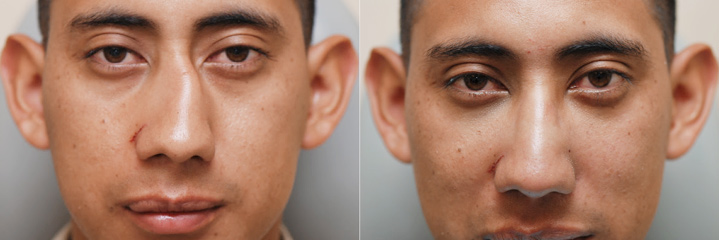
I’m an athlete. If I break my nose during a game, what should I do?
The first thing to do is to get out of the game and be evaluated by either a team physician or trainer. If there is significant bleeding and it cannot be controlled, you will need to see a facial trauma specialist urgently. Icing the area can decrease bleeding and swelling.
If there is not any significant bleeding and you can see your facial trauma specialist on the same day, you may be able to have your nose reset. Any delay past the same day of injury often means you will have to wait 5-7 days to have your nose reset.
Why should I get my broken nose repaired immediately instead of waiting to have surgery later?
Several factors make an immediate reduction preferable. First, a broken nose typically affects breathing and if you want to continue to compete, you may notice decreased endurance with your broken nose. Second, recovery from a closed nasal reduction (done on the same day) is much shorter than recovery from a surgical nasal surgery (done weeks later). Finally, a closed nasal reduction may take 15 minutes to perform while a surgical approach can take several hours.
However, if it is not possible to have a closed nasal reduction or the closed nasal reduction did not achieve the desired results, the surgical approach can still result in an excellent outcome when performed by a sports trauma specialist.
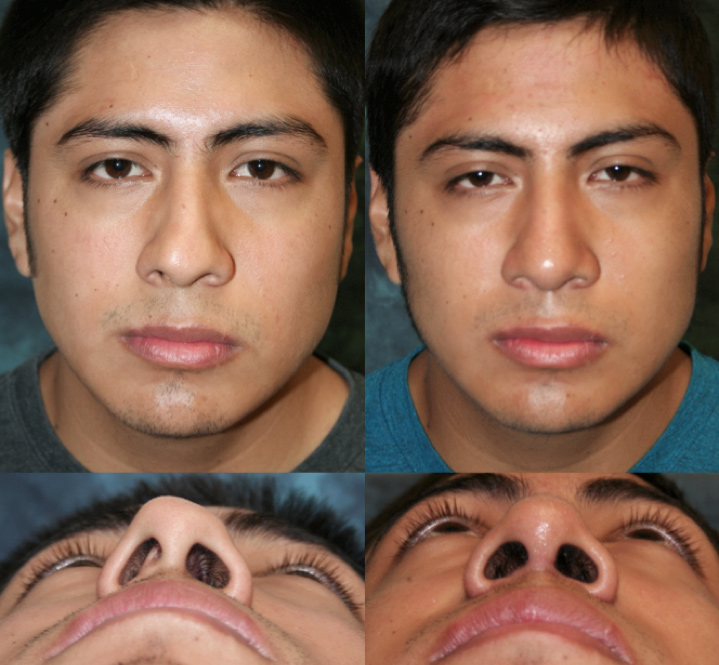
Should I wear a mask or can I do without?
The purpose of the custom made masks is to protect your broken nose, typically after it has been reset. The mask will protect your nose from trauma so that the reset bones can heal properly. Some, such as Dempsey, will chose not to wear a mask, presumably because of the fear that the mask will interfere with performance. However, in most cases it is recommended that patients wear a mask because even a slight bump can cause displacement of the reset bones during the early stages of the healing process.
Where should I get treated for a nasal bone fracture?
An experienced and qualified facial trauma specialist is the ideal physician to treat your nasal fracture. Not only are they able to treat the nasal fracture, they can also evaluate you for any other facial injuries you may have sustained. Cosmetic and functional outcomes are optimized when you are evaluated and treated by an experienced sports facial trauma specialist.
To learn more about Dr. Hootan Zandifar or nasal fracture treatment, visit: www.facialtraumamd.com.

